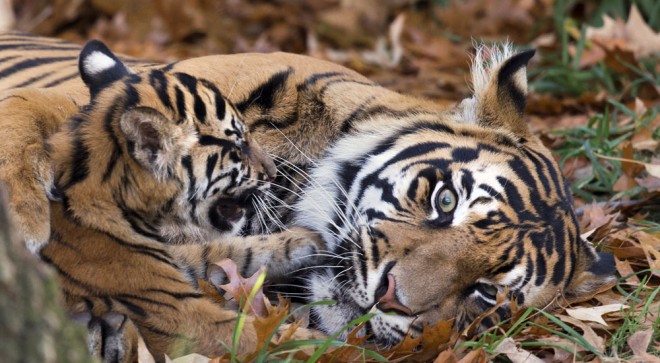Tiger that attacked handler to stay at Australia Zoo
SYDNEY—A tiger that attacked its handler at Australia Zoo, mauling him in front of a crowd of shocked spectators including schoolchildren, will remain at the popular tourist attraction, officials said Wednesday.
The Sumatran tiger reared up and bit into the neck and shoulder of 30-year-old Dave Styles on Tuesday at the Sunshine Coast zoo founded by the family of the late Steve Irwin, famous for his television show “Crocodile Hunter”.
“It wasn’t an act of aggression. It wasn’t the tiger attacking someone, it’s just a normal, daily part of the routine of the tigers and unfortunately we had a mishap,” Australia Zoo director Wes Mannion told broadcaster ABC.
Styles, who had raised the animal since it was a pup, has had surgery and remains in hospital in a stable but improving condition.
“It’s a 120 kilogram tiger, just pure muscle and [it’s] hard to wrestle off that type of beast,” English backpacker Dan Bass, who witnessed the attack, told reporters.
Article continues after this advertisement“Shock, absolute shock,” he said, describing the scene as the tiger attacked. “Screaming, and there were school children there and the teachers did really well to move them away from the glass,” he added.
Article continues after this advertisementWorkplace health and safety officials are investigating the incident, but Zoo Association of Queensland’s Al Mucci said it was unlikely to prompt major changes.
“When you’re working with any large animals in a contact way, incidents do occur from time to time,” he said.
“You are talking about animals that are about 150 to 200 kilos in weight versus a human who’s about 80 to 100 kilos, so a bump or a scratch . . . you cop your bumps and your scrapes and this is the same.”
Australia Zoo keeps three Bengal and eight Sumatran tigers, and allows visitors to have their photographs taken with the animals—a practice criticized by animal rights group PETA.
It said the injuries sustained by the trainer were entirely preventable, and called for protective barriers to be kept around dangerous animals at all times, effectively banning performances and interaction with humans.
“No amount of training or experience can stop a tiger from acting like the wild animal they are,” it said in a statement.
“The best way to protect tigers is by working to preserve their habitat, not to confine them to pens that are nothing like their homes in the wild and forcing them to do tricks or pose for photos.”
